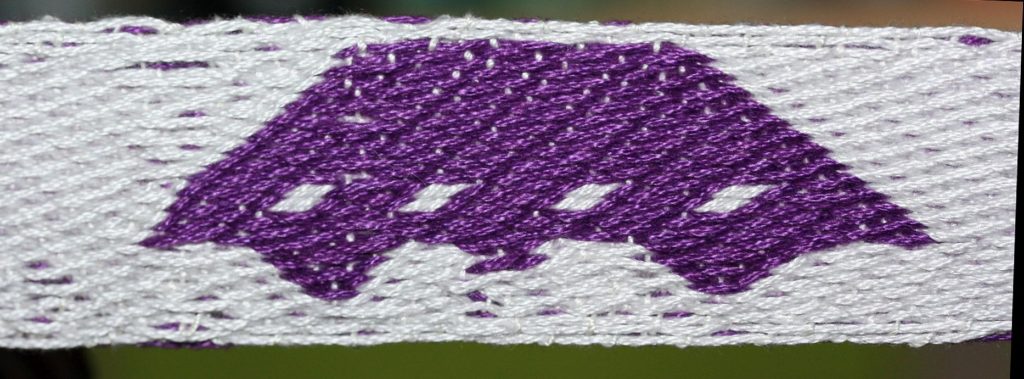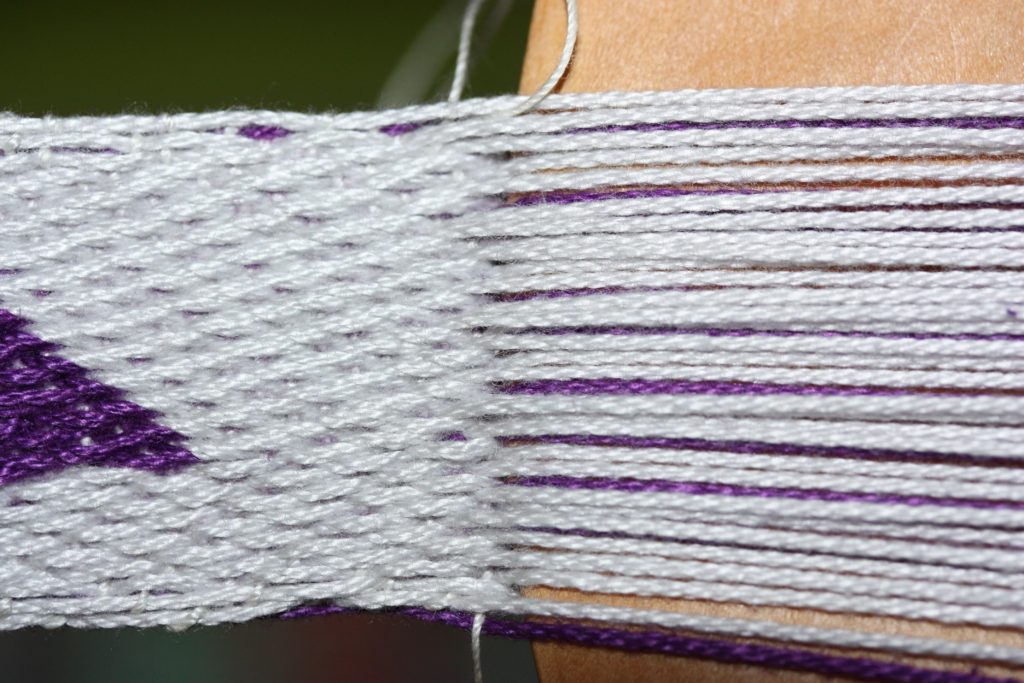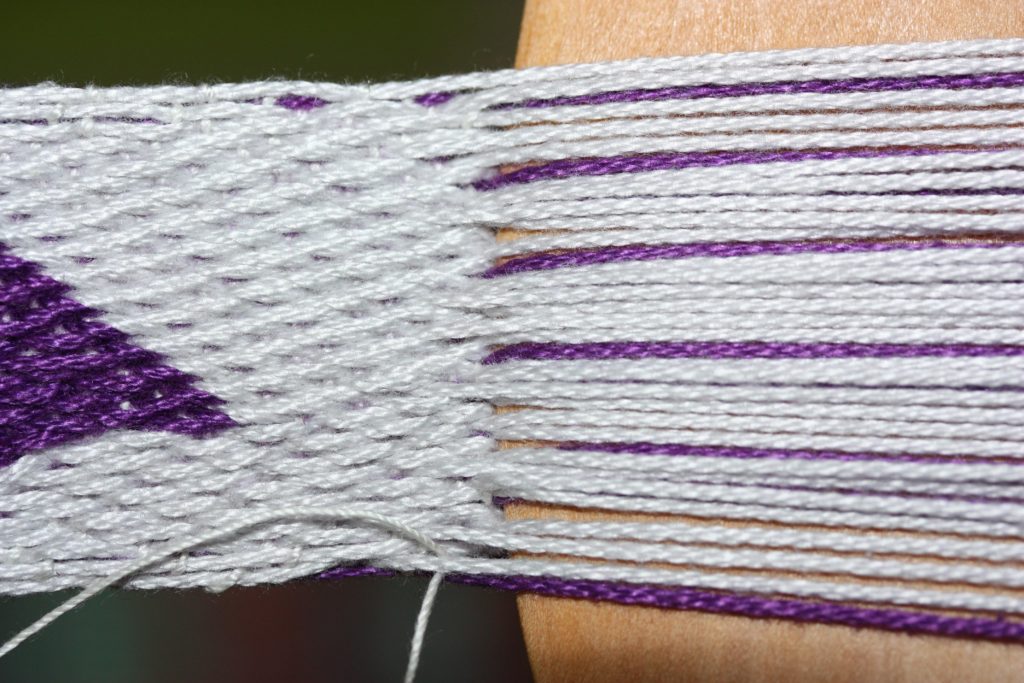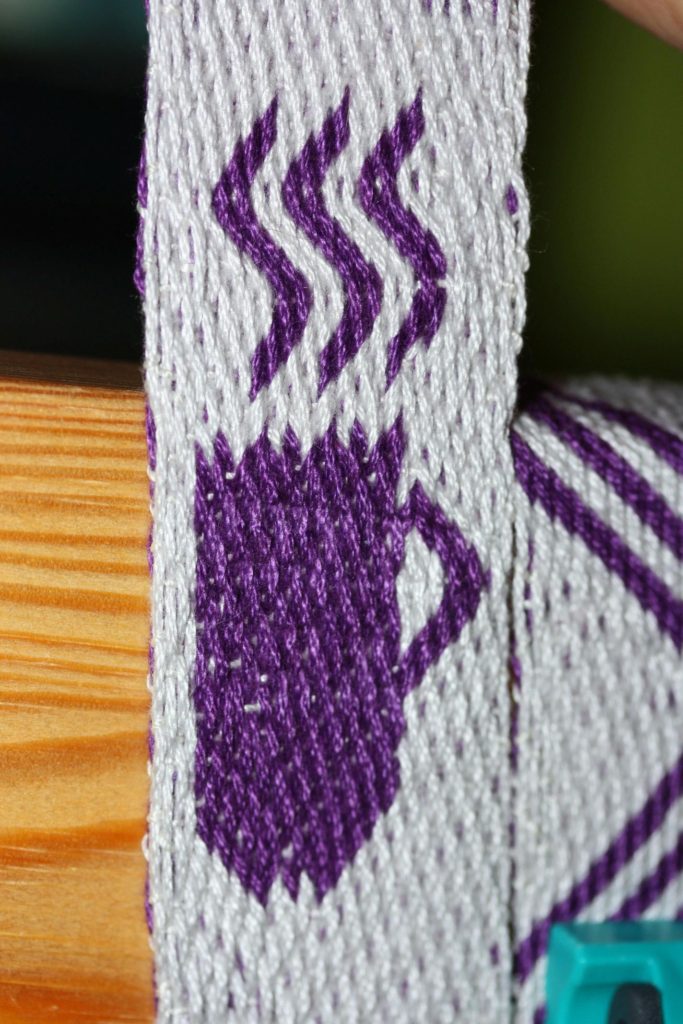Sorry for the unannounced blog silence yesterday - I was off on a research trip, and I had planned to blog on the train when going back, but then things happened. Good things, mind you, but they were solidly in the way of my plan.
Research trips usually take longer than one expects, and there's lots of photos and thinking, but there's also always something that gets forgotten. (I'm at the count of two things for the trip yesterday, currently. More might pop up.) I also usually get into a sort of "oh that is so cool" rush, and my brain goes on overdrive, and then, at some point, I crash. Completely. As in "brain to mush".
So yesterday's trip did go wonderfully well as these things go - I met with lovely colleagues, got to talk about different textile techniques, and had the wonderful opportunity to see three medieval tablet weaves up close. I then went to see a fourth one - the Ulrichsmanipel - together with my two colleagues, and so it got a bit later than I'd originally estimated. Which meant that the train home was no ICE, and thus had no wifi, and so my plan to blog something while on the train back did not work out.
By the time I was back home, my brain had reached the final state of complete mushiness, and there you go - instant blog silence due to too much textile overload. The best kind of instant blog silence, if you ask me!
Now there's the post-research-trip stuff to do: Sort through the impressions, sort through the pictures, delete all the very blurry ones, and get everything in a semblance of order. Bonus when going through the pictures: repeats of "oh, that is so amazing" might happen...
Research trips usually take longer than one expects, and there's lots of photos and thinking, but there's also always something that gets forgotten. (I'm at the count of two things for the trip yesterday, currently. More might pop up.) I also usually get into a sort of "oh that is so cool" rush, and my brain goes on overdrive, and then, at some point, I crash. Completely. As in "brain to mush".
So yesterday's trip did go wonderfully well as these things go - I met with lovely colleagues, got to talk about different textile techniques, and had the wonderful opportunity to see three medieval tablet weaves up close. I then went to see a fourth one - the Ulrichsmanipel - together with my two colleagues, and so it got a bit later than I'd originally estimated. Which meant that the train home was no ICE, and thus had no wifi, and so my plan to blog something while on the train back did not work out.
By the time I was back home, my brain had reached the final state of complete mushiness, and there you go - instant blog silence due to too much textile overload. The best kind of instant blog silence, if you ask me!
Now there's the post-research-trip stuff to do: Sort through the impressions, sort through the pictures, delete all the very blurry ones, and get everything in a semblance of order. Bonus when going through the pictures: repeats of "oh, that is so amazing" might happen...




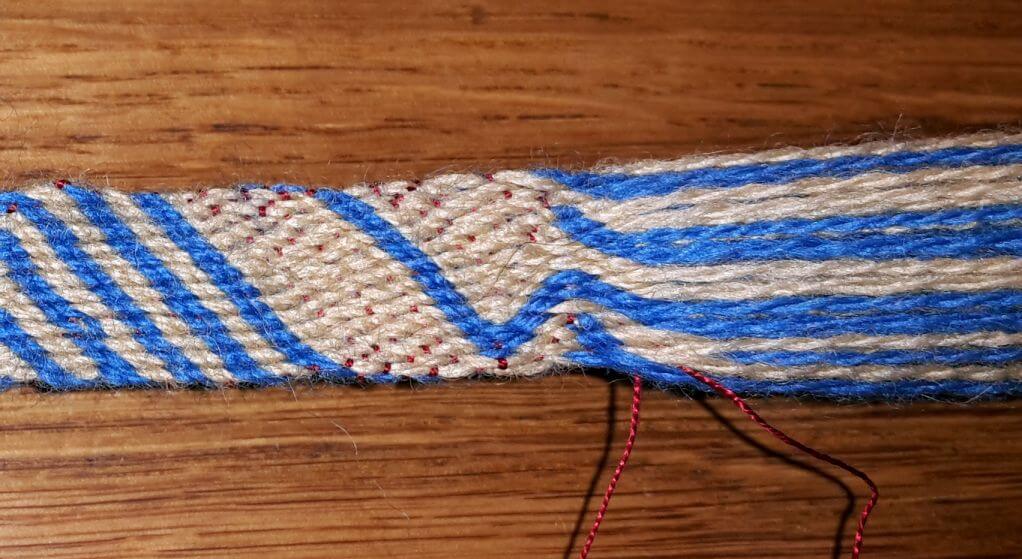
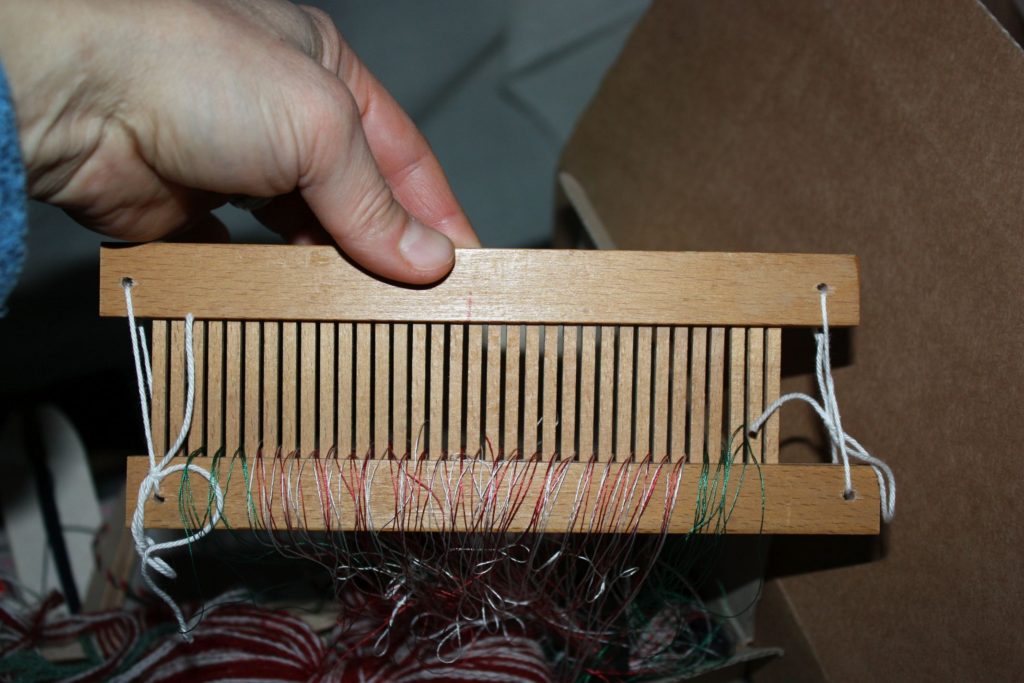 Warp spreader made from a broken piece of weaving reed - the top can come off to fill it with threads.
Warp spreader made from a broken piece of weaving reed - the top can come off to fill it with threads.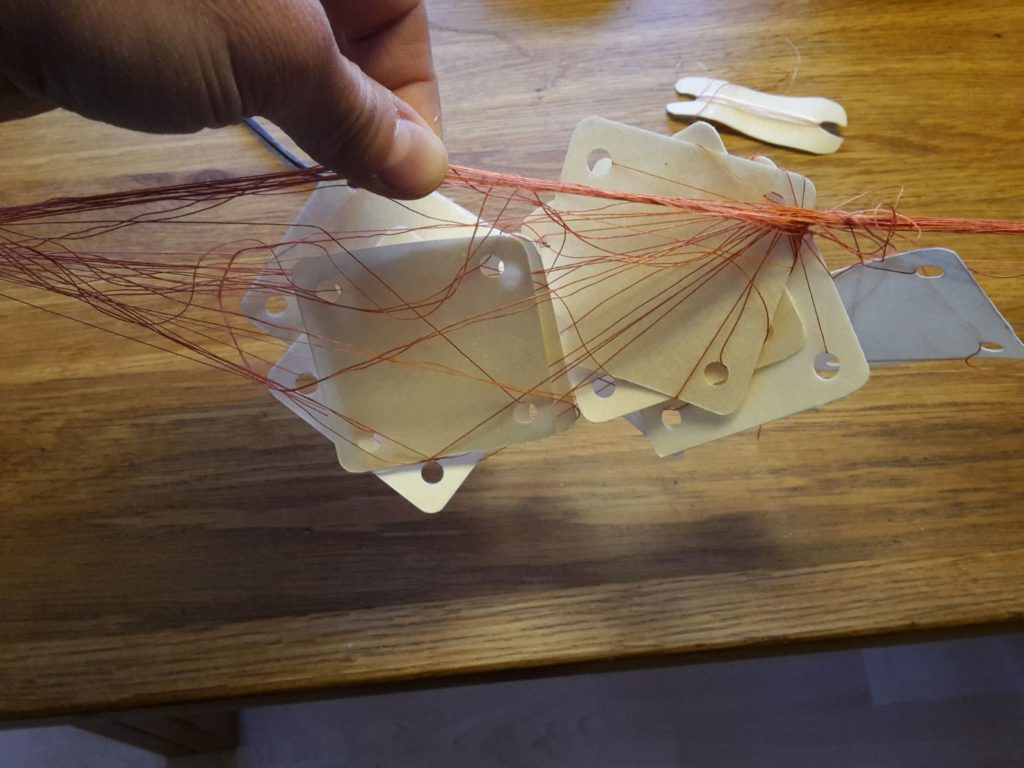
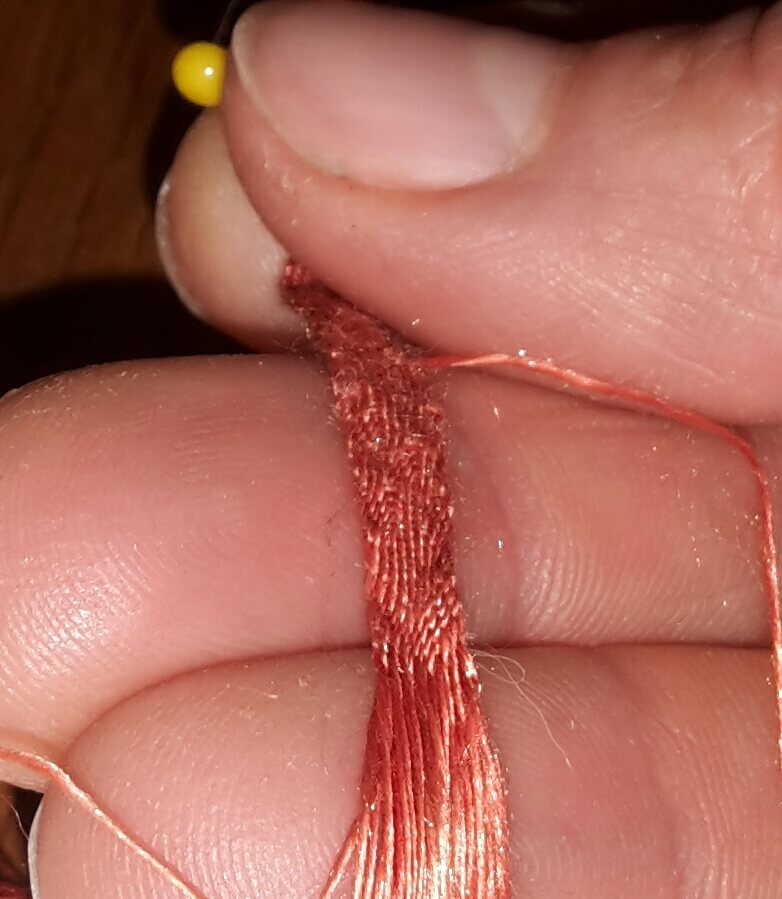
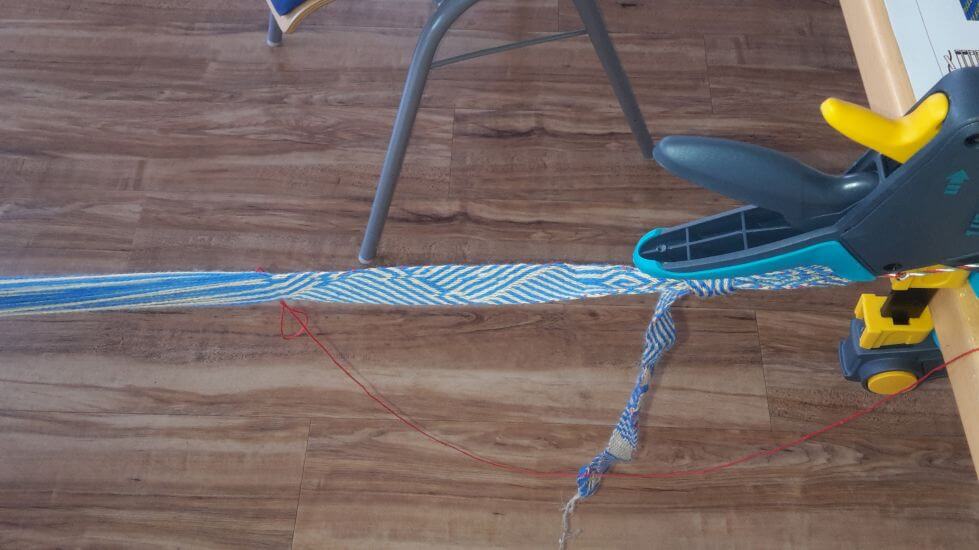 Table, clamp, band. I love this setup - it's quick, easy, versatile, and allows to have a wide choice on how to sit at the band.
Table, clamp, band. I love this setup - it's quick, easy, versatile, and allows to have a wide choice on how to sit at the band.